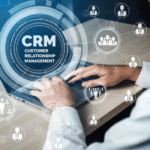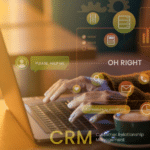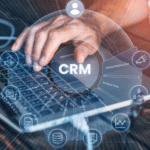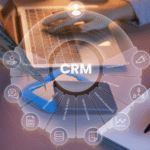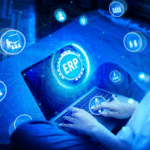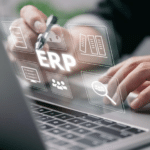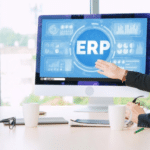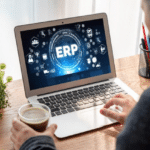Introduction
Implementing an Enterprise Resource Planning (ERP) system is a significant undertaking for any organization, offering the potential to streamline operations, enhance productivity, and drive business growth. However, the success of an ERP implementation hinges on meticulous planning, execution, and adherence to best practices. As we approach 2024, businesses must adopt a strategic approach to ERP implementation to ensure they realize the full benefits of their investment. This article outlines the best practices for implementing ERP systems in 2024.
1. Comprehensive Planning and Preparation
- Define Clear Objectives
Before embarking on an ERP implementation, it is crucial to define clear and measurable objectives. Understand what you aim to achieve with the new system, whether it’s improving operational efficiency, enhancing data accuracy, or supporting business expansion. These objectives will guide the entire implementation process. - Conduct a Needs Assessment
Perform a thorough needs assessment to identify the specific requirements of your business. Engage key stakeholders from various departments to gather insights and understand their pain points. This assessment will help in selecting an ERP solution that aligns with your business needs and goals. - Develop a Detailed Implementation Plan
Create a detailed implementation plan outlining the scope, timeline, resources, and milestones. This plan should include a project timeline, budget, and risk management strategy. A well-structured plan will ensure that the implementation process is organized and stays on track.
2. Selecting the Right ERP System
- Evaluate Multiple Options
Take the time to evaluate multiple ERP solutions to find the one that best fits your business needs. Consider factors such as functionality, scalability, ease of use, and cost. Request demonstrations and conduct thorough evaluations to ensure you make an informed decision. - Focus on Industry-Specific Solutions
Consider ERP solutions that are tailored to your industry. Industry-specific ERP systems often come with pre-configured modules and features designed to address common challenges and streamline implementation. - Assess Vendor Support and Reputation
Choose an ERP vendor with a strong reputation and a proven track record of successful implementations. Assess the level of support they offer, including training, maintenance, and customer service. A reliable vendor partnership is essential for a smooth implementation process.
3. Effective Change Management
- Communicate the Benefits
Effective communication is key to successful change management. Clearly communicate the benefits of the new ERP system to all employees, highlighting how it will improve their daily tasks and overall business performance. Address any concerns and provide regular updates on the implementation progress. - Engage Stakeholders
Engage stakeholders from the beginning and involve them in the decision-making process. Their input is valuable in ensuring that the ERP system meets the needs of all users. Involving stakeholders also helps in gaining their buy-in and support. - Provide Comprehensive Training
Invest in comprehensive training programs to ensure that employees are proficient in using the new ERP system. Offer hands-on training sessions, user manuals, and ongoing support to help users become comfortable with the system. Well-trained employees are more likely to embrace the new system and use it effectively.
4. Phased Implementation Approach
- Start with Critical Modules
Adopt a phased implementation approach by starting with the most critical modules. This approach allows you to manage the complexity of the implementation process and minimize disruptions to business operations. Once the core modules are successfully implemented, you can gradually roll out additional functionalities. - Pilot Testing
Conduct pilot testing to identify and resolve any issues before a full-scale rollout. Pilot testing allows you to test the system in a controlled environment and make necessary adjustments. It also provides an opportunity for employees to familiarize themselves with the system and provide feedback.
5. Data Migration and Management
- Data Cleansing
Ensure that the data migrated to the new ERP system is accurate, complete, and consistent. Perform data cleansing to eliminate duplicates, correct errors, and standardize data formats. High-quality data is crucial for generating reliable reports and insights. - Data Mapping and Validation
Map the data from the old system to the new ERP system to ensure a smooth transition. Validate the data to ensure that it is correctly mapped and accurately transferred. Data validation is essential to maintain data integrity and prevent issues during the implementation process. - Data Governance
Implement data governance policies to maintain data quality and accuracy over time. Establish roles and responsibilities for data management, define data standards, and implement processes for data validation and verification.
6. Continuous Monitoring and Evaluation
- Define Key Performance Indicators (KPIs)
Define KPIs to measure the performance and impact of the ERP system on your business operations. Track metrics such as operational efficiency, cost savings, and employee productivity to assess the system’s effectiveness. - Regular Reviews and Updates
Conduct regular reviews to evaluate the performance of the ERP system and identify areas for improvement. Use these reviews to ensure that the system continues to meet your business needs and delivers the expected ROI. Stay current with the latest updates and upgrades offered by your ERP vendor to keep the system efficient and secure.
7. Leveraging Advanced Technologies
- Integrate AI and Machine Learning
Integrate AI and Machine Learning (ML) capabilities into your ERP system to automate routine tasks, analyze data, and provide actionable insights. AI-powered analytics can identify trends, predict future outcomes, and optimize decision-making processes. - Utilize IoT for Enhanced Connectivity
Incorporate Internet of Things (IoT) devices to enhance connectivity and data collection across your operations. IoT-enabled ERP systems can monitor equipment performance, track inventory levels, and improve asset management, leading to increased efficiency and reduced costs.
8. Ensuring Scalability and Flexibility
- Choose a Scalable Solution
Select an ERP system that is scalable to accommodate future growth and changes in your business. A scalable ERP system can easily adapt to increased data volume, additional users, and new business processes. - Opt for Cloud-Based Solutions
Cloud-based ERP solutions offer scalability, flexibility, and cost-effectiveness. The subscription-based model of cloud ERP reduces the need for large upfront investments in hardware and software, making it accessible to businesses of all sizes.
Conclusion
Implementing an ERP system in 2024 requires careful planning, strategic decision-making, and adherence to best practices. By following these guidelines, businesses can ensure a successful ERP implementation that maximizes ROI, enhances operational efficiency, and supports long-term growth.

